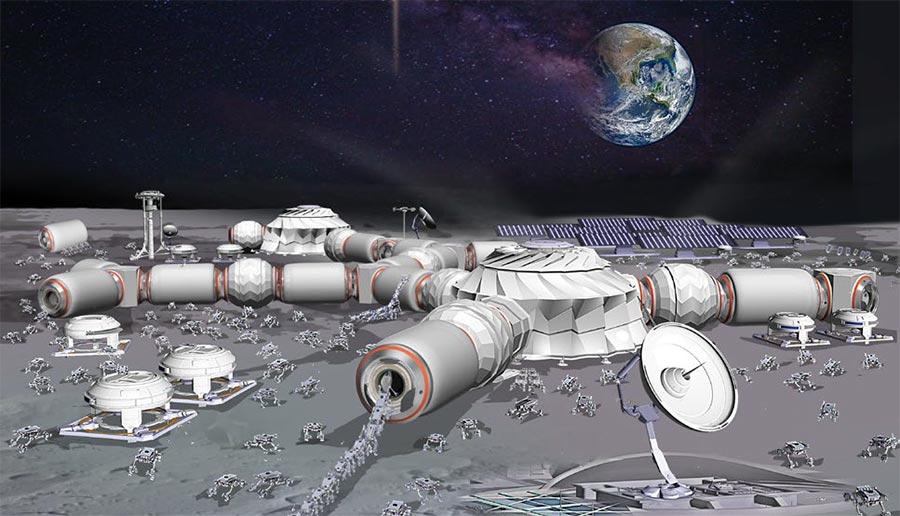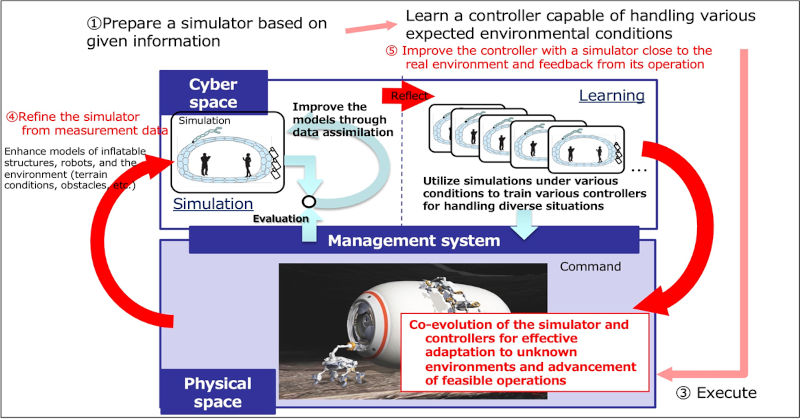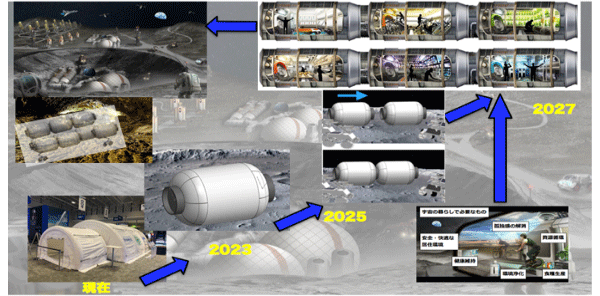Outline of R&D
New Life Spheres Opened up by AIRobots
1. Position in the program
This research and development project aims to establish a base under extreme conditions, namely the space environment, with the challenge of achieving "robots that learn and coexist with humans through the co-evolution of AI and robots by 2050." The research and development in this project aim to dramatically expand human resources and recognize the space environment as the ultimate subject of investigation. Particularly, the international manned exploration program (ARTEMIS), launched in 2019 through global cooperation, is pursuing a significant leap from previous manned space activities, and the development of various challenging technologies is widely anticipated.

In this research and development project, the future goal is set to realize long-term residence in space, a subject that has not been fully explored in the current space development field. By backcasting the elements necessary for its achievement and advancing research and development utilizing AI and robots, the aim is to explore new habitats beyond Earth. The challenge of "Creating a new habitat through AI robots" represents a great leap for humankind, and it is expected to become a catalyst for a significant transformation in civilization itself. The realization of a space habitat in this project is a crucial step towards achieving the initial stage of lunar base construction, serving as the base camp for manned missions. With this accomplishment, activities towards the establishment of a permanent lunar base will become possible, aiming for a breakthrough in human presence on the moon.
In addition, developed technologies can be applicable to the earth such as natural disasters and etc.
2. Overview of the R&D and the Challenges
The pinnacle of manned space exploration is the challenge of creating an independent habitat for life, including humans, in extreme environments such as the moon and Mars, breaking away from Earth's dependency. This project aims to conduct research and development toward the construction of a base system equipped with smart technology and behavior-changing technology, while backcasting this achievement and utilizing AI robot technology, to achieve a long-term, sustainable human habitat by 2050. The project's objective is to establish the necessary technology to construct lunar bases by 2050 and develop expandable living modules that enable comfortable human activity in extreme regions.
Challenging Tasks:
- Portability to the extreme lunar environment:
- Developing inflatable technologies and deployable structures that can be constructed, expanded, and reduced with limited human activity, including transportation.
- Stability and adaptability in unknown extreme environments.
- Sustained activity:
- Achieving stable and adaptable installations in unknown extreme environments, capable of sustained activity and expansion, by implementing control systems that adapt to environmental factors such as temperature, ground conditions, and stability.
- To overcome these challenging tasks, the following approaches will be taken in the research and development:
- Construction of cyber-physical systems capable of functioning in unknown and extreme environmental regions.
Robotization of flexible structures and deployable structures themselves.
Realization of small robots capable of functioning in extreme environments and enabling cooperative operations.
High-level actions through the coordination of flexible structure robots and small robots.

3. Future plans
By aiming to establish residential spaces required for lunar base construction by 2040, it will be possible to lead to implementation in society. While aiming for the development of initial residential areas on the moon, activities will also be carried out to demonstrate and evaluate the comfort of living modules on Earth. The plan is to construct inflatable residential modules, including comfort, and return the achievements of this research and development project to society while clarifying improvement elements for better living modules through evaluation during its activities.
